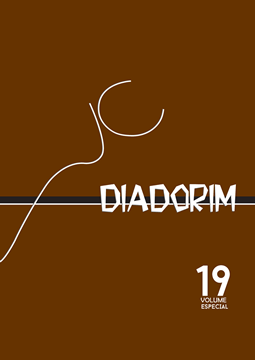Passivep and The Distinction Between Eventive, Resultative, and Statitive Passives 1¨
DOI:
https://doi.org/10.35520/diadorim.2017.v19n0a13513Abstract
Tis paper focuses the distinction between verbal and adjectival passive sentences. For that differentiation to be accounted for, a previous proposal considering a specifc functional node for eventive passives - passiveP (LIMA JÚNIOR; AUGUSTO, 2015) is retrieved. It is arguably assumed that the approach based on passiveP, besides maintaining a uniform analysis to active and passive sentences (as VoiceP in Collins (2005)), deals well with intervention issues, and is prosperous in addressing parametric variation and language acquisition facts. As far as the tripartite distinction among the different types of passives is concerned (EMBICK, 2004; DUARTE; OLIVEIRA, 2010), it is proposed that a main bipartite distinction between eventive and adjectival passives may be retained, which is here attributed to the presence of passiveP. Concerning stative and resultative passives, an agreement operation between the auxiliary verbs and the participle (LUNGUINHO, 2011) is assumed to allow for different readings to be obtained. A fourth group of passive-like sentences, involving participles, which have lost their connection with their original verbs, is also syntactically distinguished and treated as actual copular constructions.Downloads
Published
Issue
Section
License
Copyright transfer -- Authorization to publication
If the submitted article is approved for publication, it is already agreed that the author authorizes UFRJ to reproduce it and publish it in Diadorim: revista de estudos linguísticos e literários, the terms "reproduction" and "publication" being understood as defined respectively by items VI and I of article 5 of Law 9610/98. The article can be accessed both by the World Wide Web (WWW) and by the printed version, with free consultation and reproduction of a copy of the article for the own use of those who consult. This authorization of publication is not limited in time, and UFRJ is responsible for maintaining the identification of the author of the article.

The journal Diadorim: revista de estudos linguísticos e literários is licensed under a Creative Commons Attribuition-NonCommercial 4.0 International (CC BY-NC 4.0).

